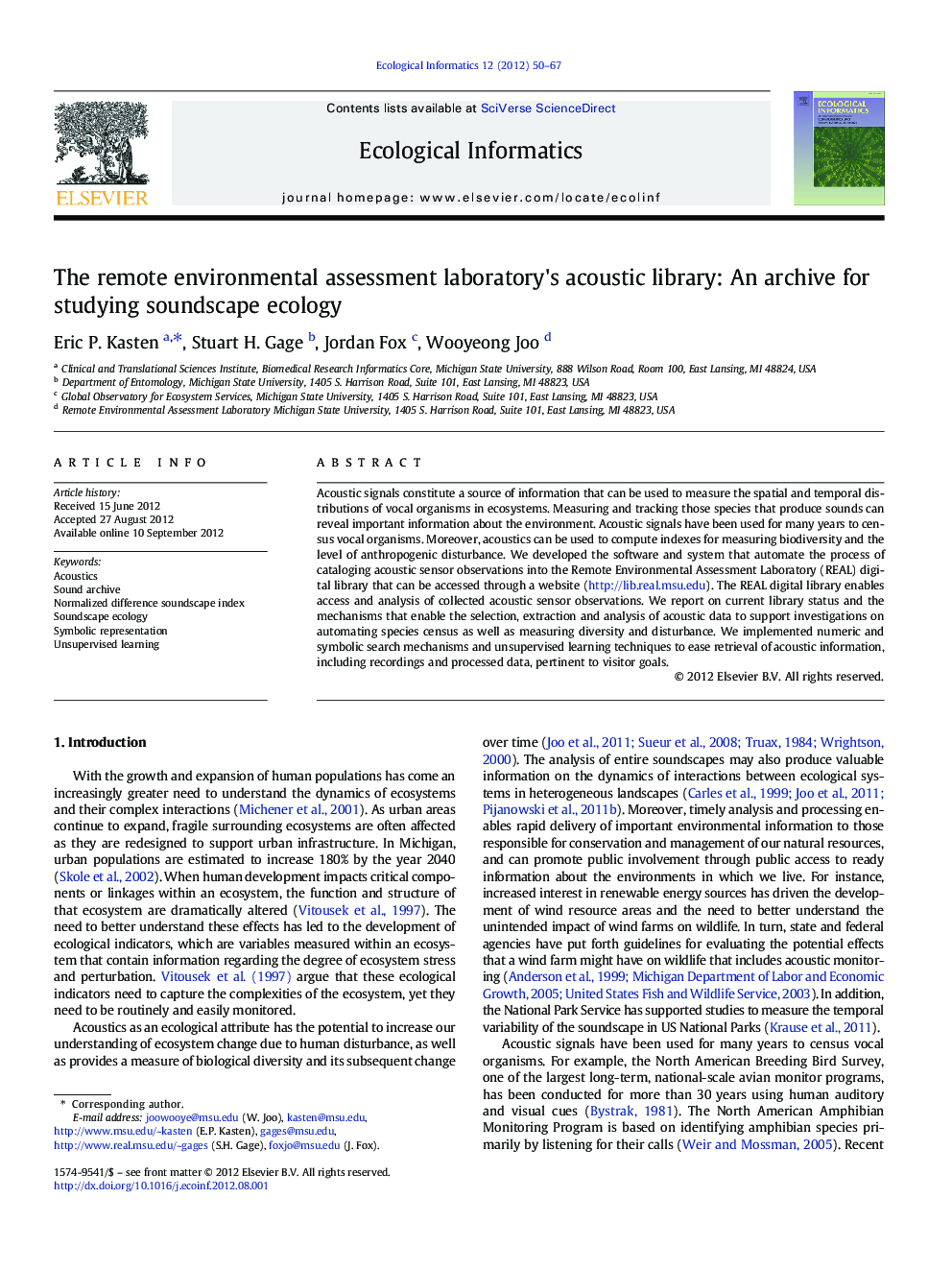| Article ID | Journal | Published Year | Pages | File Type |
|---|---|---|---|---|
| 4375027 | Ecological Informatics | 2012 | 18 Pages |
Acoustic signals constitute a source of information that can be used to measure the spatial and temporal distributions of vocal organisms in ecosystems. Measuring and tracking those species that produce sounds can reveal important information about the environment. Acoustic signals have been used for many years to census vocal organisms. Moreover, acoustics can be used to compute indexes for measuring biodiversity and the level of anthropogenic disturbance. We developed the software and system that automate the process of cataloging acoustic sensor observations into the Remote Environmental Assessment Laboratory (REAL) digital library that can be accessed through a website (http://lib.real.msu.edu). The REAL digital library enables access and analysis of collected acoustic sensor observations. We report on current library status and the mechanisms that enable the selection, extraction and analysis of acoustic data to support investigations on automating species census as well as measuring diversity and disturbance. We implemented numeric and symbolic search mechanisms and unsupervised learning techniques to ease retrieval of acoustic information, including recordings and processed data, pertinent to visitor goals.
► We describe the Remote Environmental Assessment Laboratory's digital acoustic library. ► We describe and discuss synoptic representations for acoustic sensor observations. ► We examine how well synoptic patterns cluster with respect to manual census patterns. ► Metrics for clustered synoptic patterns correlate with those for manual census patterns.
